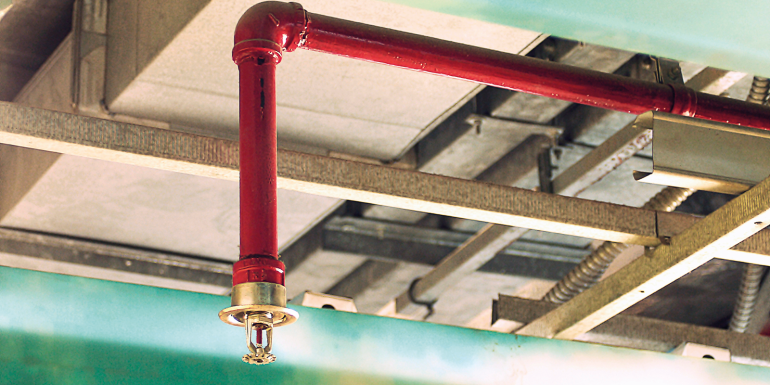Well protected buildings

Iain Cox, chair of the Business Sprinkler Alliance, says it’s time we started to think differently about the value of having a well-protected building
A huge number of buildings have been constructed over the past 25 years, but uncertainties remain regarding the fire safety features and strategies within many of them. So why has fire safety not been held in the same regard as a building’s design, aesthetics or green credentials?
One explanation could be an optimistic belief among businesses that “a fire will not happen to me”, creating a culture where decision-makers do not always consider the real impact of fire and its consequences. They underestimate the direct financial impact on both their property and their business, and the time it takes to recover.
In terms of a property’s value, we should be thinking about performance over time. We already use metrics, data and evaluation in this way for some aspects of performance. However, too often this doesn’t include considering risk and events such as fire. Compare this with Energy Performance Certificate ratings, which are seen as key indicators of a building’s energy efficiency and energy costs. This information has to be provided when a property is sold.
The same is not always true for fire safety, and there are no readily understandable fire safety ratings for buildings. If fire safety information is not available, it does not always spark questions; but it should do, and this is perhaps a more prominent concern for certain buildings today.
There are moves afoot for selected buildings to create such data through regulatory requirements for a golden thread of information. However, this needs to be used in a wider variety of buildings. We need to ask how buildings deliver fire safety and are protected against such events, and where the information is held to support this. Such information would become a valuable asset for any owner and should negatively affect the value if not provided across all buildings.
For example, if one office block has sprinklers, fire alarms, documented maintenance and plans, and another doesn’t, then the sprinkler-protected building is clearly worth more. If nothing else, it has more equipment. The value of that equipment can be seen functionally, but it is also an investment in fire safety and protection of the property over time. It also means that if anything goes wrong, then you’re likely to have more of that asset left afterwards.
This also raises the question as to the value of a property that has been sprinkler-protected over time. Some would argue that value is only created when you stop something bad happening. Airbags in cars are a good analogy; interestingly, airbags are still not a legal requirement in the UK – but a new car could not receive a decent safety rating without one.
Today, automatic fire sprinklers are not widely used in the UK, partly because the regulatory guidance rarely prescribes their use, and partly because – even when prescribed – they are often value-engineered out. Yet they are shown time and again to prevent significant damage or destruction of a building by fire.
We need to place risks into context and understand their potential impact, so that they can be understood and planned for appropriately. Clear outcomes in the face of fire can then be defined. An inescapable conclusion is that including a sprinkler system can prevent major financial and equipment losses, containing what could be a major disaster and ensuring it is only a minor inconvenience.
Fire is indiscriminate, but that doesn’t mean actions can’t be taken to prevent and control it when it occurs. Now is the time to think of how, and why, we should protect our valuable assets.
For more information, visitmbusiness-sprinkler-alliance.org
Business Sprinkler Alliance will be exhibiting at the Embedding Sustainability Conference, find out more at cbuilde.com/cabeconf2022

Iain Cox is chair of the Business Sprinkler Alliance, a group of fire safety professionals that aims to increase the number of business premises fitted with automatic fire sprinklers




